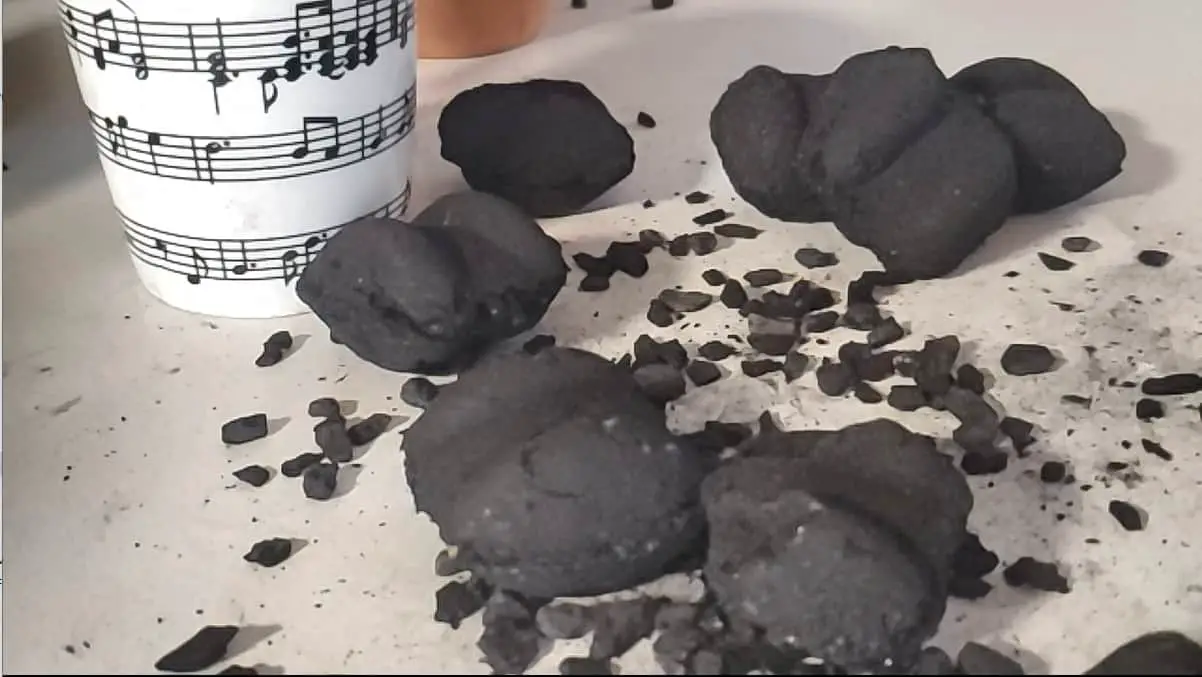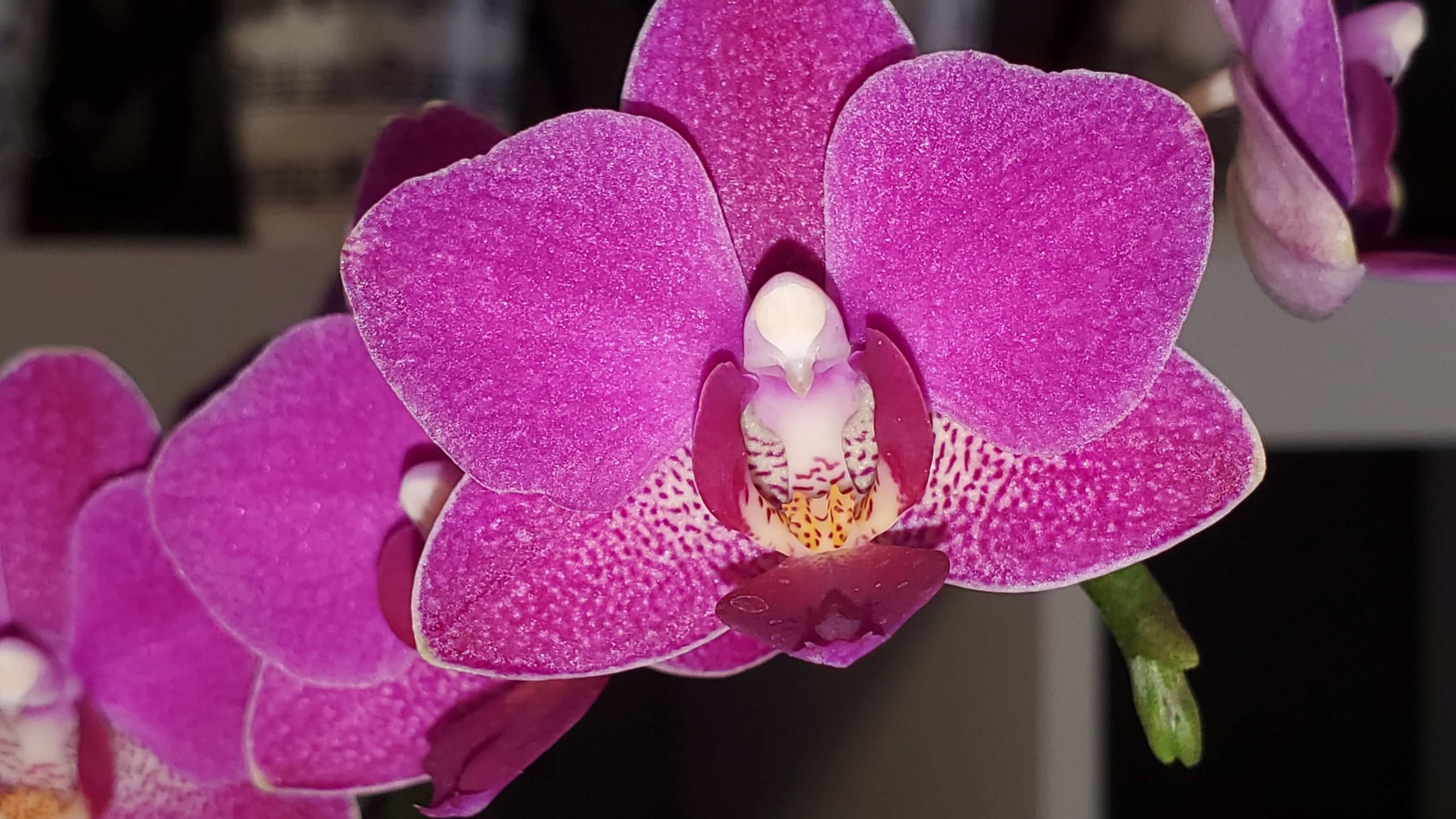Top Benefits of Adding Charcoal to Your Potting Medium
Is wood charcoal good for your orchids? Charcoal is an excellent potting medium for orchids since it eliminates odor, breaks down the buildup of bacteria, absorbs the salt residue (therefor reduces the risk of root burn) and doesn’t degrade. Providing a firm stabilizer for larger orchid root to cling, charcoal doesn’t retain moisture, and can increase the pH of the orchid medium.
In my opinion, adding charcoal has amazing benefits, and I always add charcoal to my potting mix. But don’t believe everything you hear about the miracles and wonders of using charcoal in your medium.
First let’s take a closer look at what charcoal is and then we’ll discuss what it doesn’t do.
If you want the video version of this post, you can click here to go to my YouTube Channel.
What is charcoal and how is it made?
Charcoal, on the other hand, is the slow-burning of wood at high temperatures, (400º C or 750º F) in the absence of oxygen so it wouldn’t combust, bursting out in flames. During this process, called pyrolysis, water was eliminated, leaving behind a chuck of carbon, nitrogen and potassium.
What’s the difference between activated charcoal and hardwood charcoal?
Hardwood charcoal that comes directly out of the “oven” has an immense ultra-fine surface, filled with pores. The slow-burning process quadrupled the surface area of the initial wood. Yet during this procedure, the pores filled up with the smoke around them, because that is what charcoal does. It absorbs the nutrients, chemicals, smells, bacteria—whatever it has around it. So even though these pores are now there and the surface area is amazing, allowing roots to cling to them and love them, they have tenants: smoke.
To activate a charcoal means to rid the gas (or smoke) that built up inside the extremely porous surface during its creation, and replace it with nitrogen. Nitrogen will depart from the pores during natural gas exchanges, leaving the charcoal with a much larger surface area again.
Hardwood charcoal still works as an amazing absorbent, in whatever shape you buy it in: chunks, powder, particles, pellets, and pressed cylinders. So, don’t fret if the activated charcoal is harder to find or more expensive. Utilize the hardwood charcoal and you’ll still see the results.

Why add charcoal to the Potting Medium?
Aquarium builders swear by adding charcoal in their displays. In every single article I read about building aquariums, ripariums, and vivariums, the experts added charcoal for the same reasons mentioned above: (1) it reduces the smell, and (2) breaks down bacteria.
Charcoal is also used to eliminate toxins in industrial plants, before they leave to the atmosphere. Charcoal absorbs the harmful gases, decreasing the pollutants disposed into the air.
Nutrition experts also use activated charcoal in pills or tablets, used to eliminate the toxic build-up from a poor diet. The charcoal absorbs the elements that are in excess, and are eliminated, promoting a better diet plan in the beginning. If charcoal did not have such absorbing qualities and properties, then they wouldn’t be used in these different places.
If you want to read more about how activated charcoal interacts with plant tissue, this scientific article published on PubMed and written by T. Dennis Thomas on “The Role of Activated Charcoal in Plant Tissue Culture,” explains that perfectly.
The second reason to add charcoal is that it absorbs salt residue of synthetic fertilizers. Charcoal absorbs whatever is around it (except water) and the chemicals that were introduce during watering or fertilization are no exceptions. This is an important step if your orchid has root burn.

All Rights Reserved.
How does charcoal aid in curing orchid root burn?
Orchids get their nutrients through the air and what rainfall brings to them from debris of other plants. Since orchids grown inside don’t have a tropical rain forest hoovering above them, we need to add fertilizers during the watering.
Many fertilizers contain excess chemicals and stronger substances, that is why we recommend always diluting the recommended dosage. Over time, the fertilizers will evaporate, leaving salt behind on the surface and sides of the potting medium, closer to the ventilation slits.
Having these acidic toxins close to the roots for a prolonged period of time will harm the sensitive roots. The first sign of root burn will be the white velamen (fuzzy stuff on the roots) dry up and turn brown.
Salt-build up can be reduced also by giving the orchid a proper rinse.
Let running water pour through he orchid, rinsing away any build-up that has occurred. This is harder done with medium like lava rocks, where the salt build-up likes to adhere with tenacity. But sphagnum moss, charcoal, fir bark and other mediums are easier to flush out. If you see a white, shiny build up that can sometimes sparkle when light this it, then you need to thoroughly rinse out your orchid under running water.
What does charcoal do to the pH of my orchid?
Bad quality sphagnum moss can also bring the acidity down even more.
Charcoal increases the pH, bringing the medium up to more neutral levels. This counter balance is necessary to maintain a healthy orchid.
In one research, an orchid enthusiast soaked the roots of her root-burned orchid in a water solution with a little lemon and vinegar. Although it was an interesting read, I don’t recommend this method, and neither did several people in the commentaries. Charcoal helps with increasing the pH.
Does charcoal expand the time in between repotting?
Another example that was used was the pine bark. Without charcoal, pine bark would last 12 months before a repot was required. When added charcoal to the mix, the pine bark lasted 2 years.
I cannot prove or disprove that charcoal increases the time in between repotting. In my research, I found only word of mouth and fables, but nothing really reliable to bet my last dollar on.
In the article “Tips for Growing Orchids in Apartments”, published by Singapore’s National Park’s quarterly newsletter, named MyGreenSpace, they state that “The potting medium is an important factor for the orchids to get enough moisture. Traditionally, orchids are grown in charcoal and broken brick pieces, but there are several other good options. Sphagnum moss retains water well and a little can be added to charcoal or broken brick pieces to increase the humidity in the pot.” Source Singapore Government, National Parks.
On the other hand, since I didn’t find any research to disprove these findings, they may have some validity. What was proven though, was that charcoal does improve the drainage and doesn’t decay. Both of these qualities aid in expanding the time in-between repotting.
How does charcoal improve drainage?
Charcoal doesn’t degrade
So we’ll stand by our answer. Other materials will have to be replaced continually, usually once every year or every other year—not charcoal.
Charcoal increases soil “fertility”
Yet there is an abundant amount of charcoal in this soil, giving it the name “Terra Preta”, or Dark Earth. Some articles uphold this idea because the charcoal keeps the nutrients that have been deposited in it’s micropores, only releasing them in time. Due to our research in how charcoal is made and the properties of the soil in the rain forest, this is plausible.
This would also mean that if you use a fertilizer (as you should) to water your orchids, the charcoal will absorb these nutrients for a longer period of time than those mediums which lack charcoal. Less fertilizer will need to be used.
Another supporting idea for increased fertility is that charcoal is nothing more than a lump of carbon and a natural source of potassium…and carbon is essentially beneficial to plants.
With the air pockets that the charcoal has, there is more gas exchange inside the medium, promoting air flow and toxin removal. This can be tied into the increased fertility or promoting optimal gas exchanges, but either way, your orchid appreciates having carbon in its potting medium.

Charcoal is a hard-enough medium to stabilize larger plants
As always, I love a good question, and set out to find the answer. To my surprise, there are exceptions to where planting in only charcoal are recommended. If you live in an extremely humid environment, which rains almost every day, then I’d give this answer my full “Yes!”.
Charcoal doesn’t retain any of the humidity that sphagnum moss or pine bark do, causing your orchid to dry out fast. Even if you watered the orchid every day, it still can’t get the humidity from the just the charcoal.
You’d have to soak this orchid regularly.
Another exception are the orchids that do well mounted. Still, mounted orchids are crafted with a tiny bit of medium, and providing only charcoal would not allow for this extra humidity.
If you’d like to try potting in charcoal only, I’d increase the times and amount of water you provide your orchid. I’ve heard of this method done in other places, but have not tried it out myself—and have no desire to, either. I just cringe when I think how my orchids would react.
Is there a better charcoal?
Bad quality charcoal is usually a softer wood used to start with, like soft pinewood. This will degrade faster than the normal, hardwood charcoal does. Do it yourself charcoal is also a bad, bad, very bad idea—remains from a fireplace—bad idea.
You can find horticulture charcoal most everywhere. So please don’t go out and do-it-yourself type thing. Trust me, your orchid will frown.
If you’d like to read some more before trying out orchid growing, you can check out my article on using sphagnum moss as potting mix or another article on proper humidity for your orchid.




In fact I keep my Vanda coerulea in chunks of charcoal only and she happy compared with others stuff I tried before.